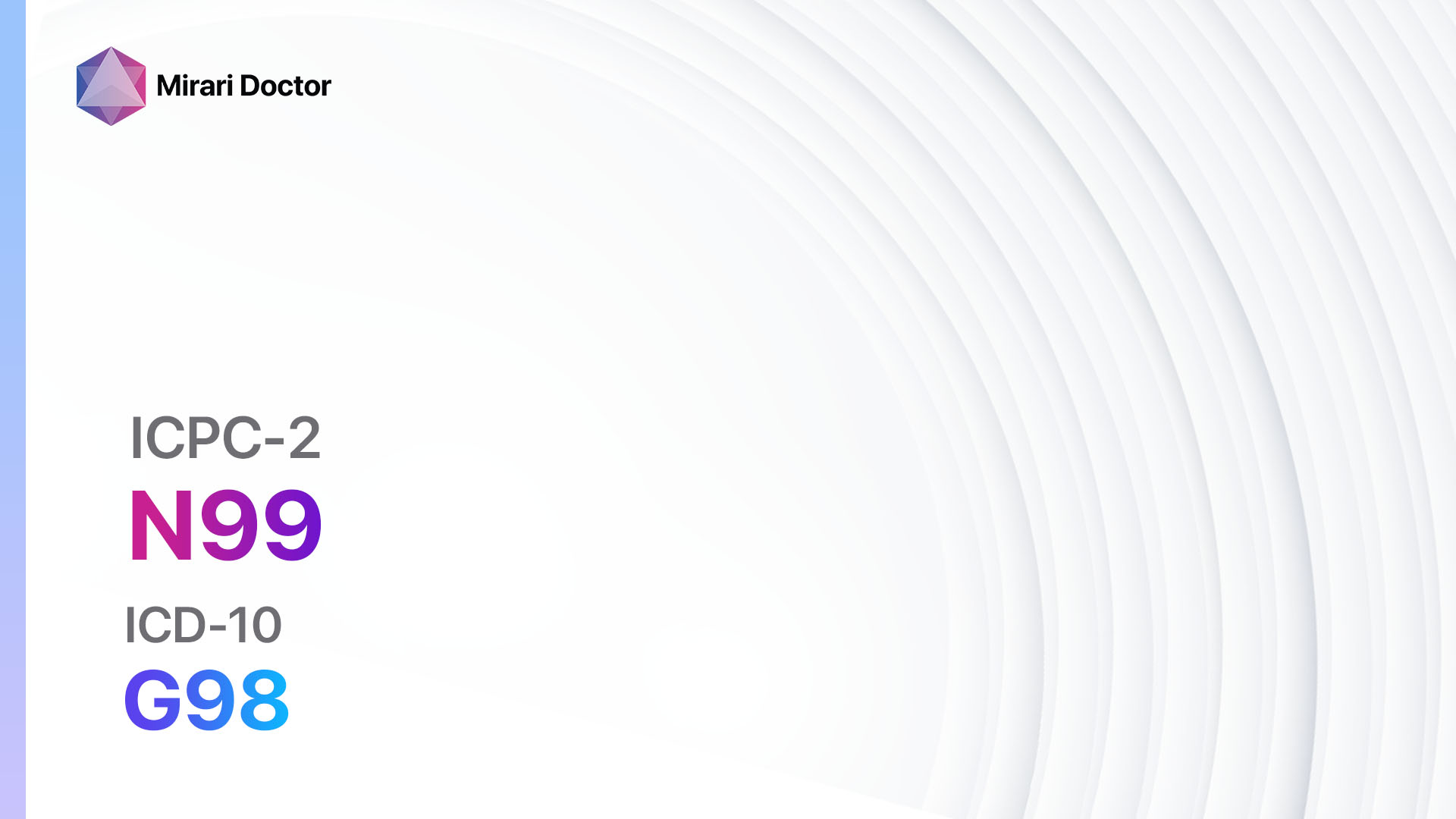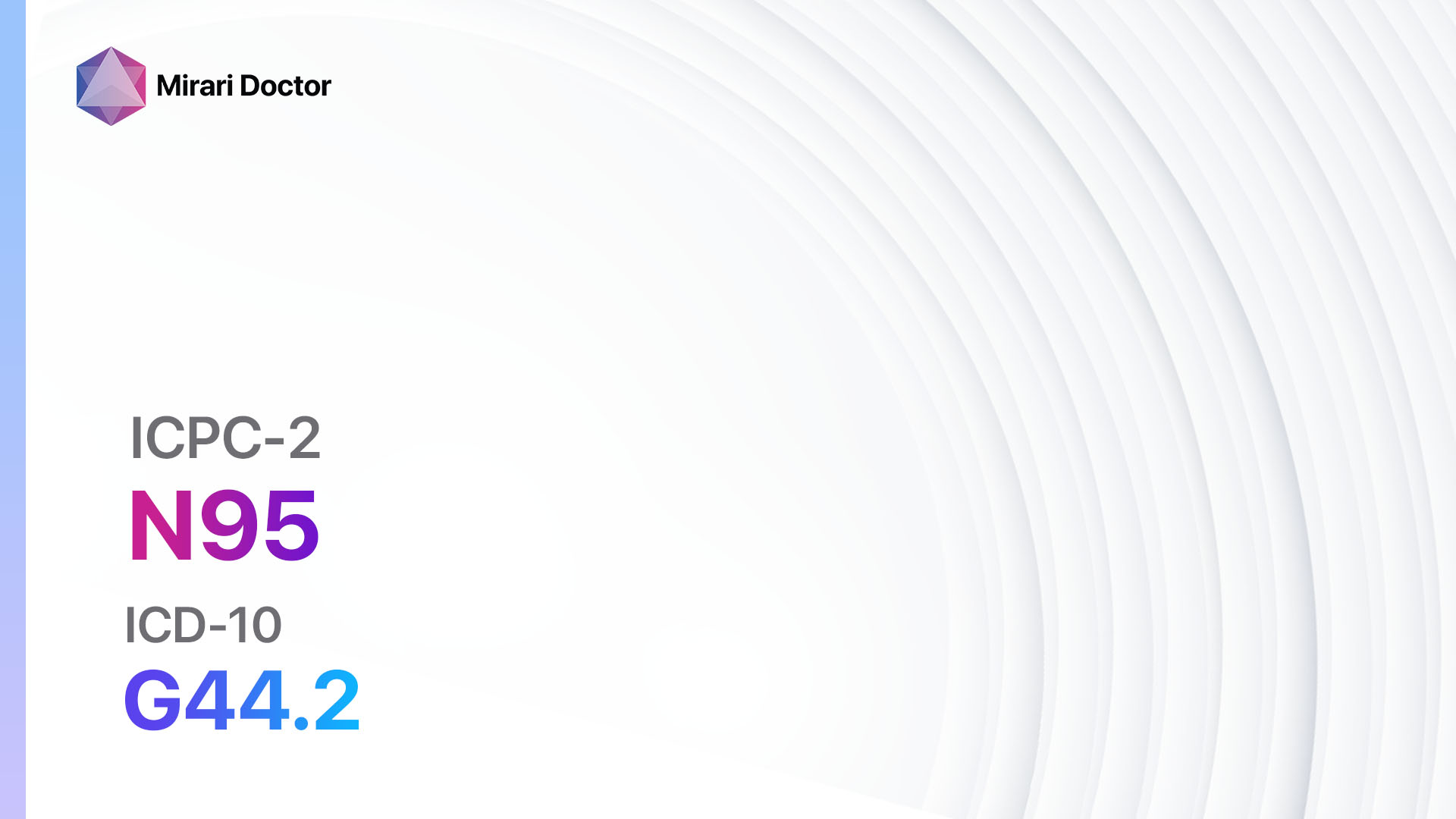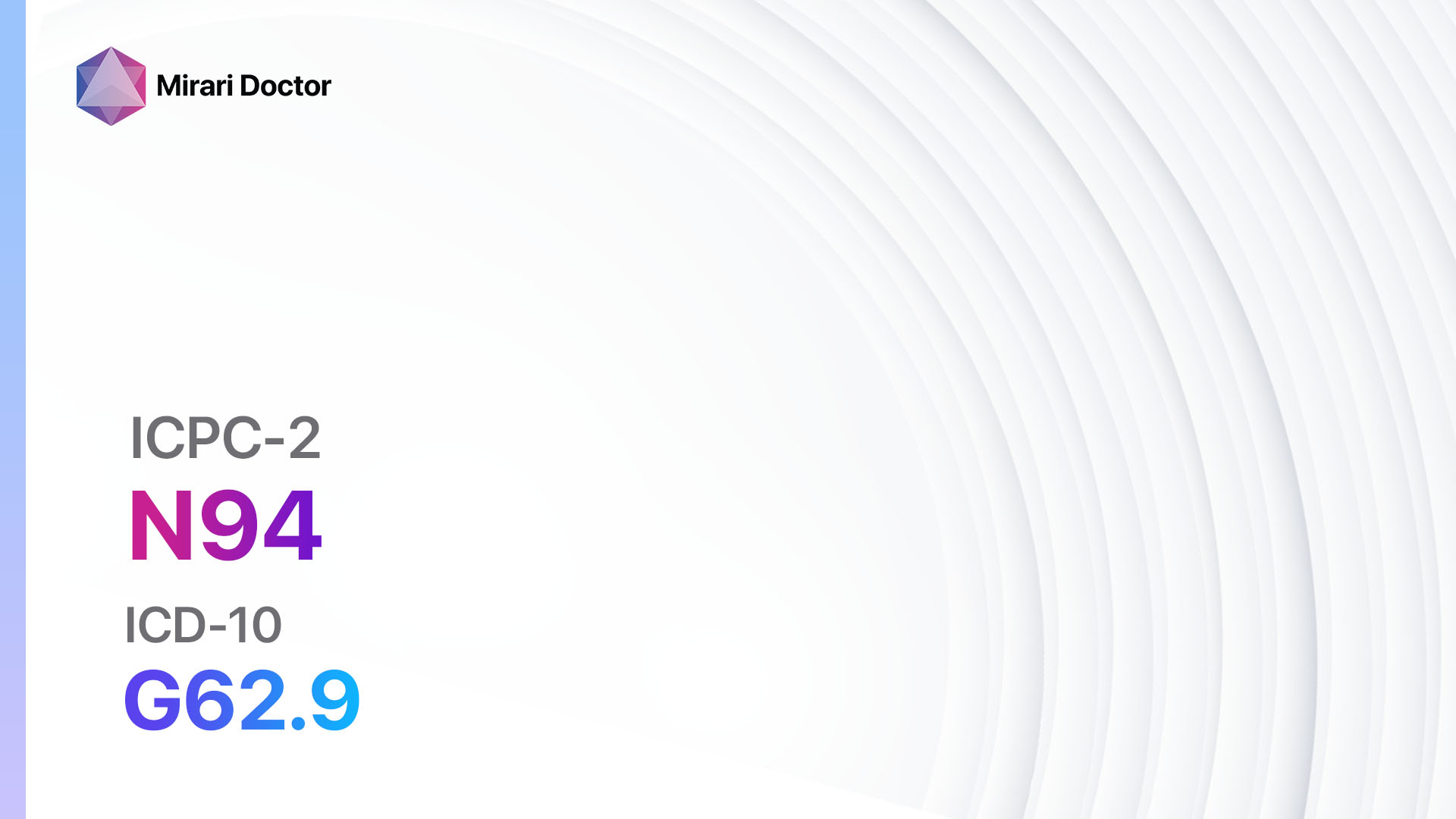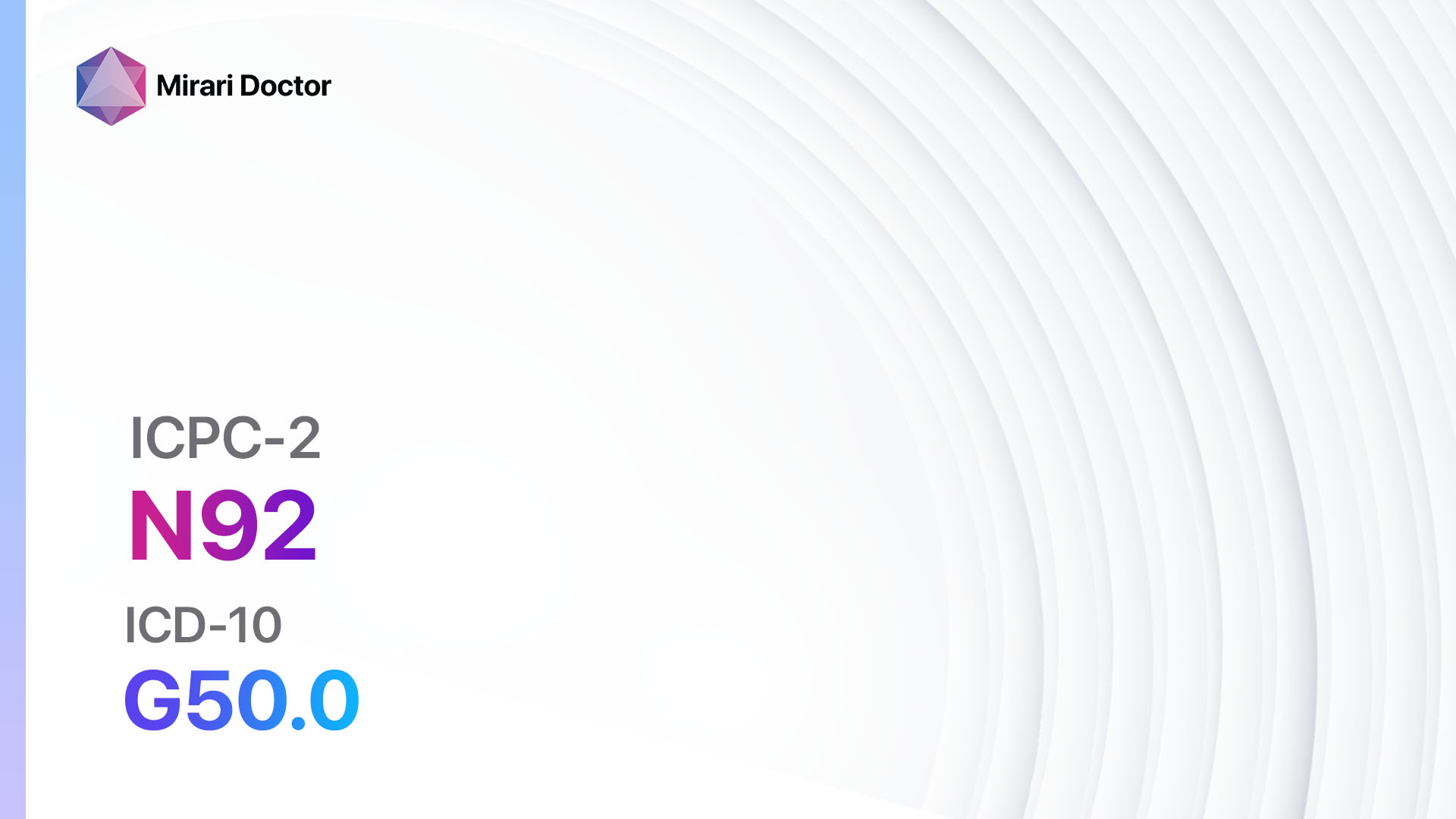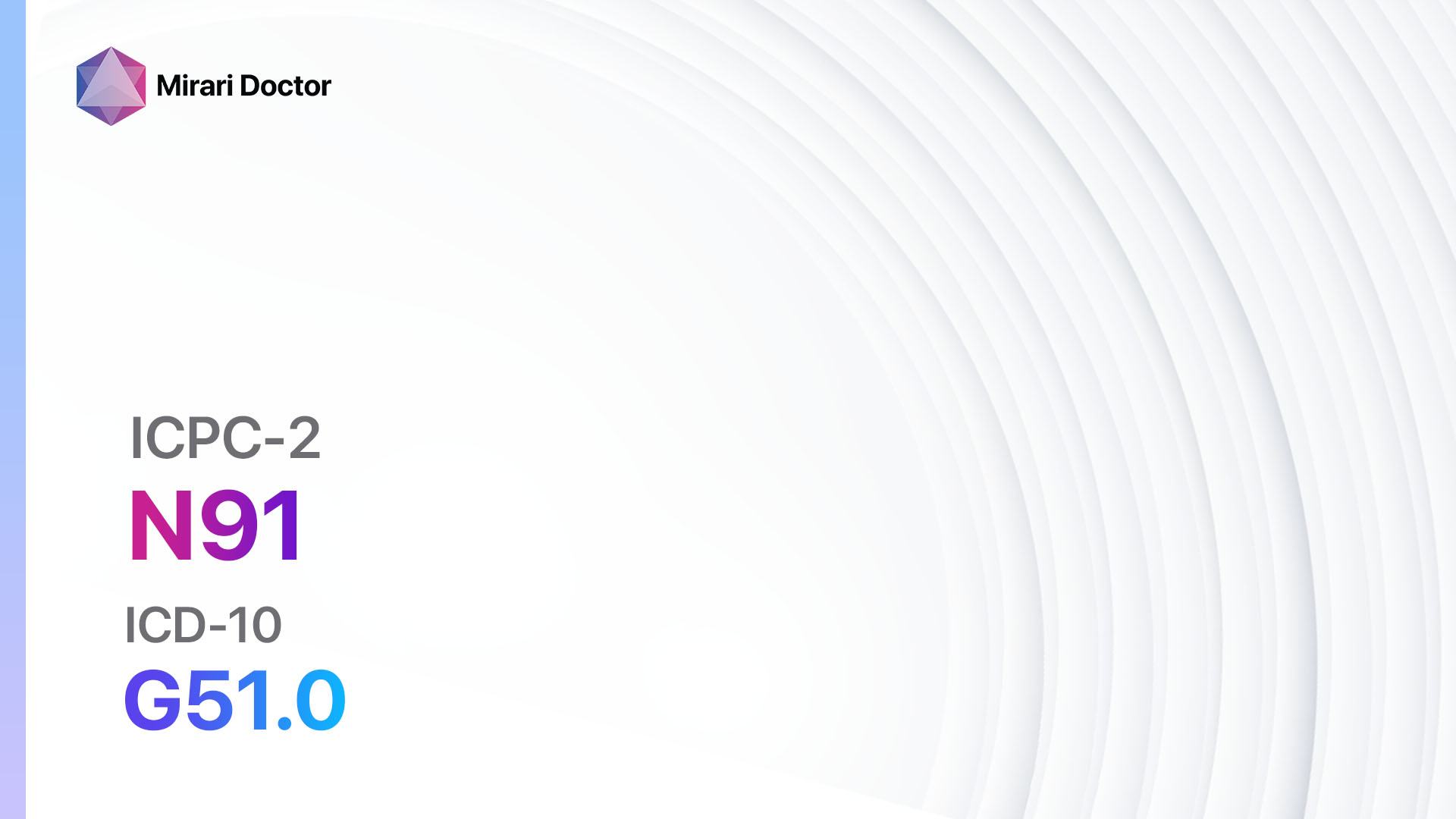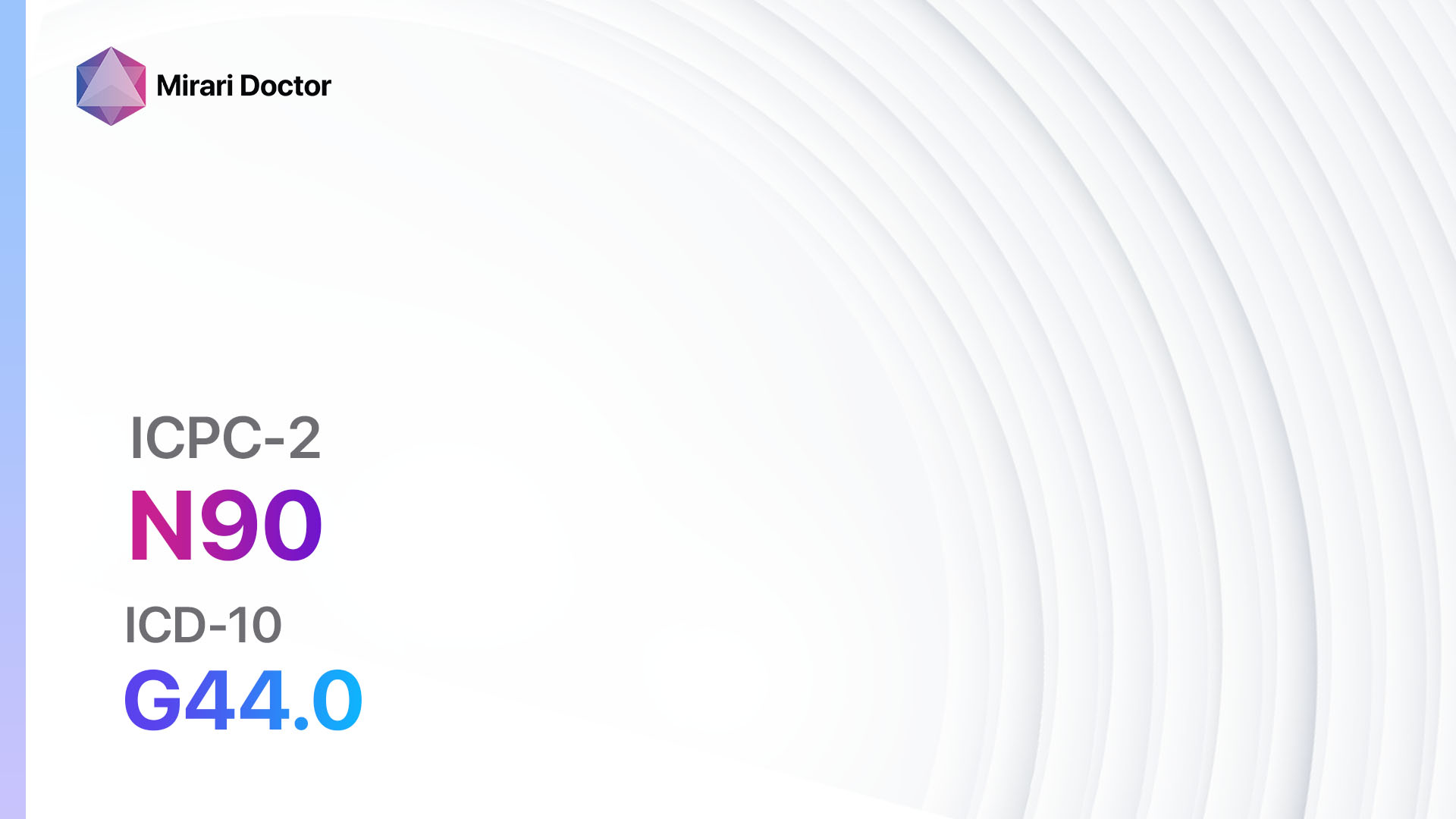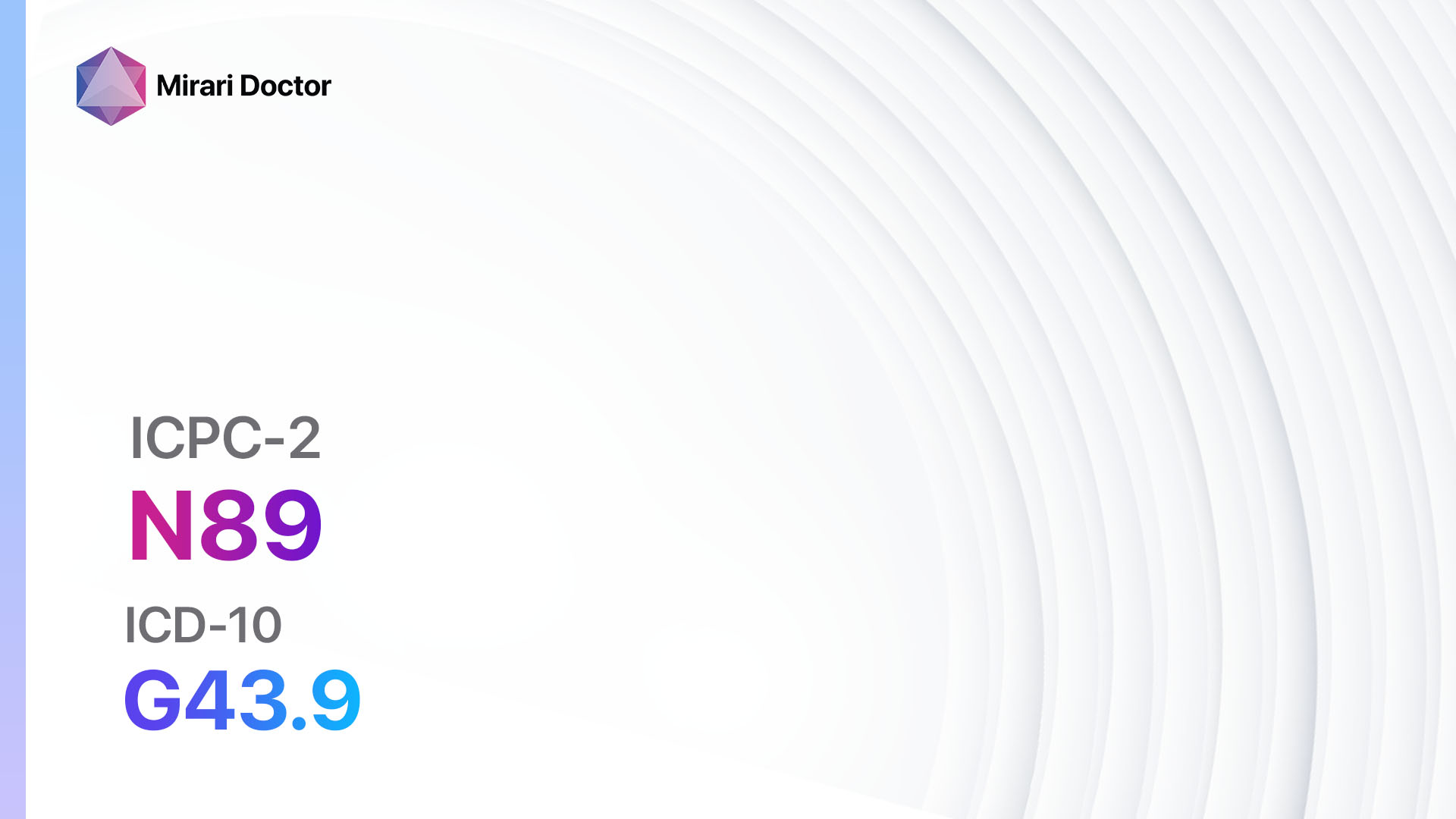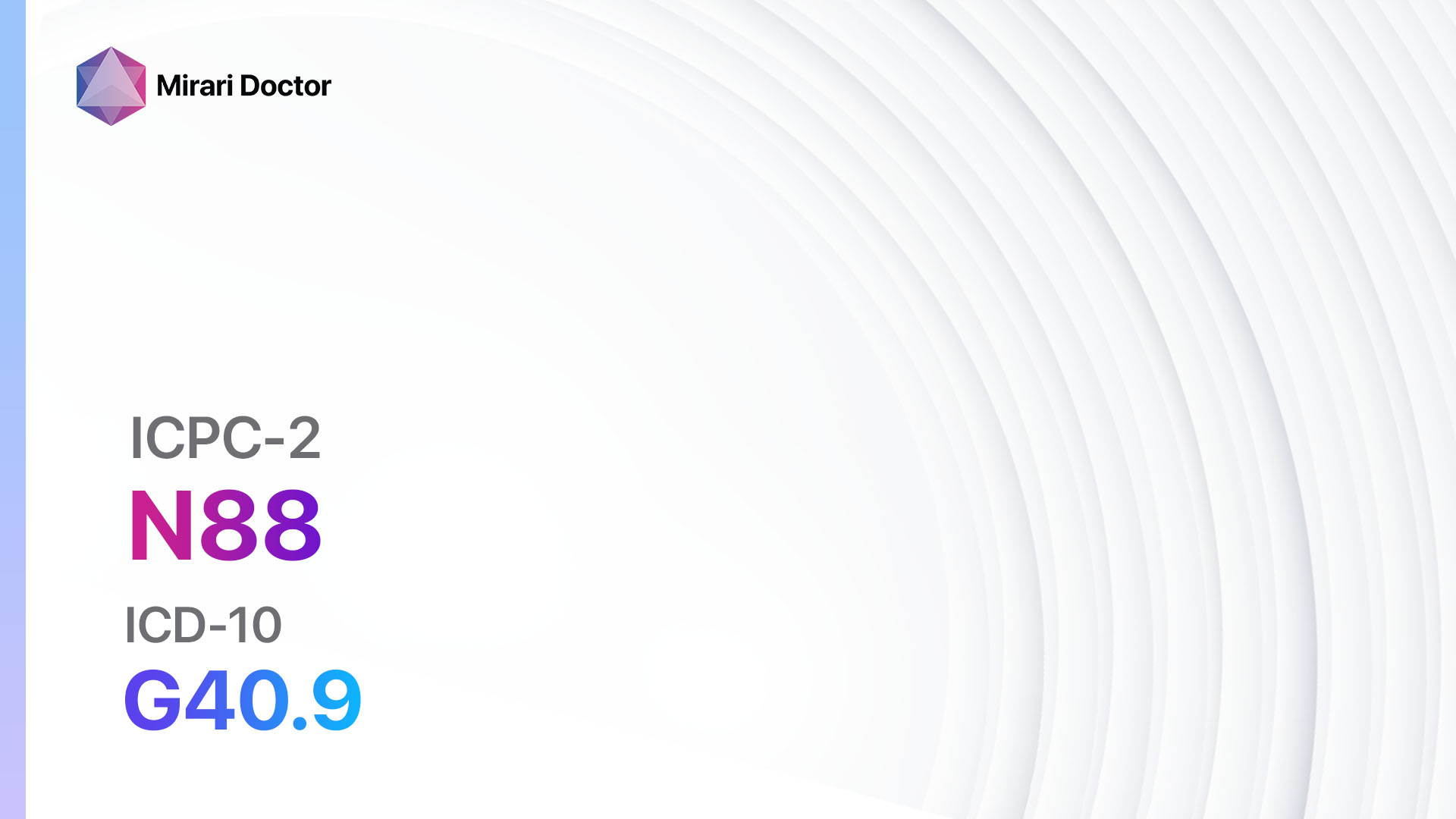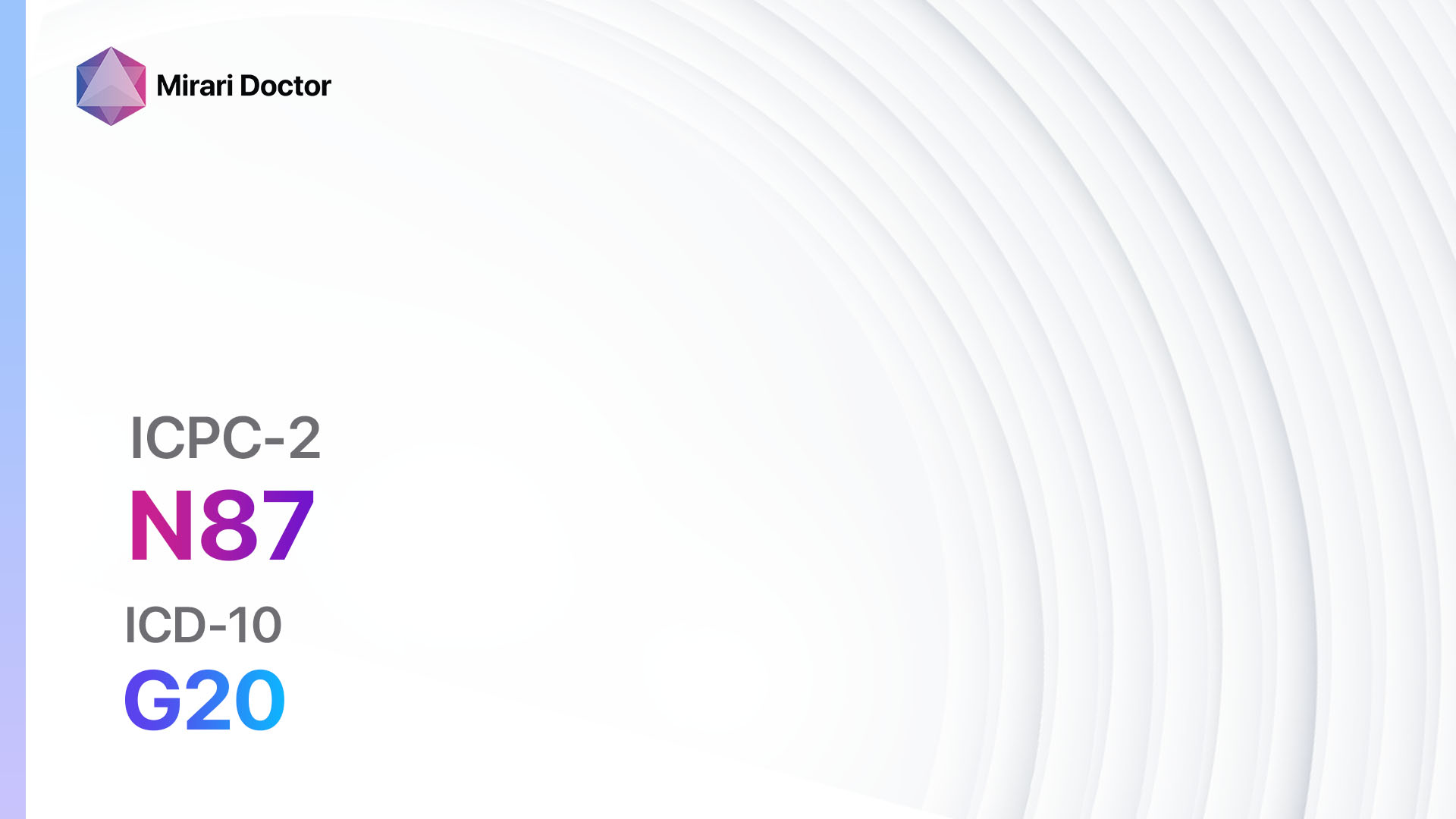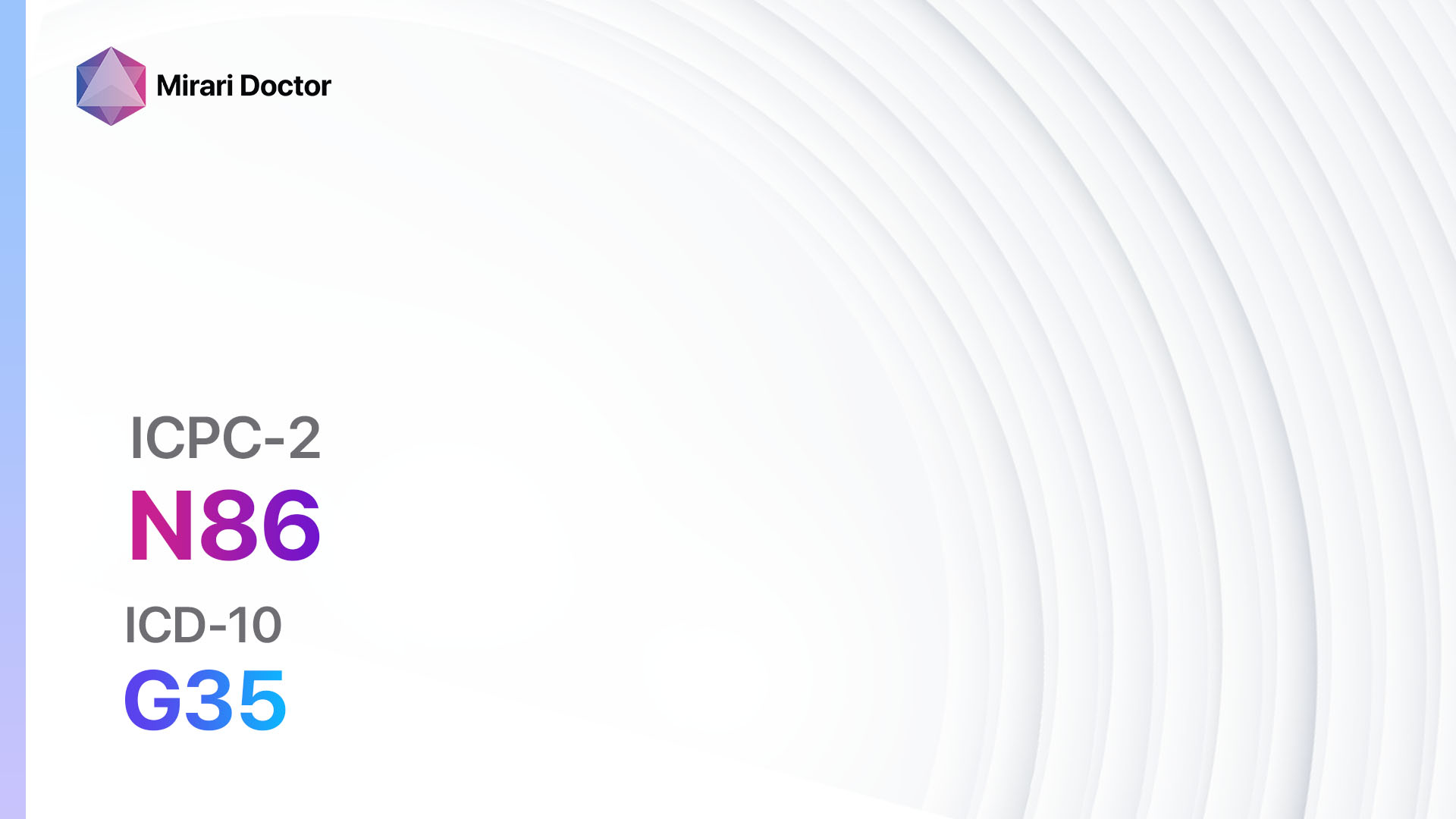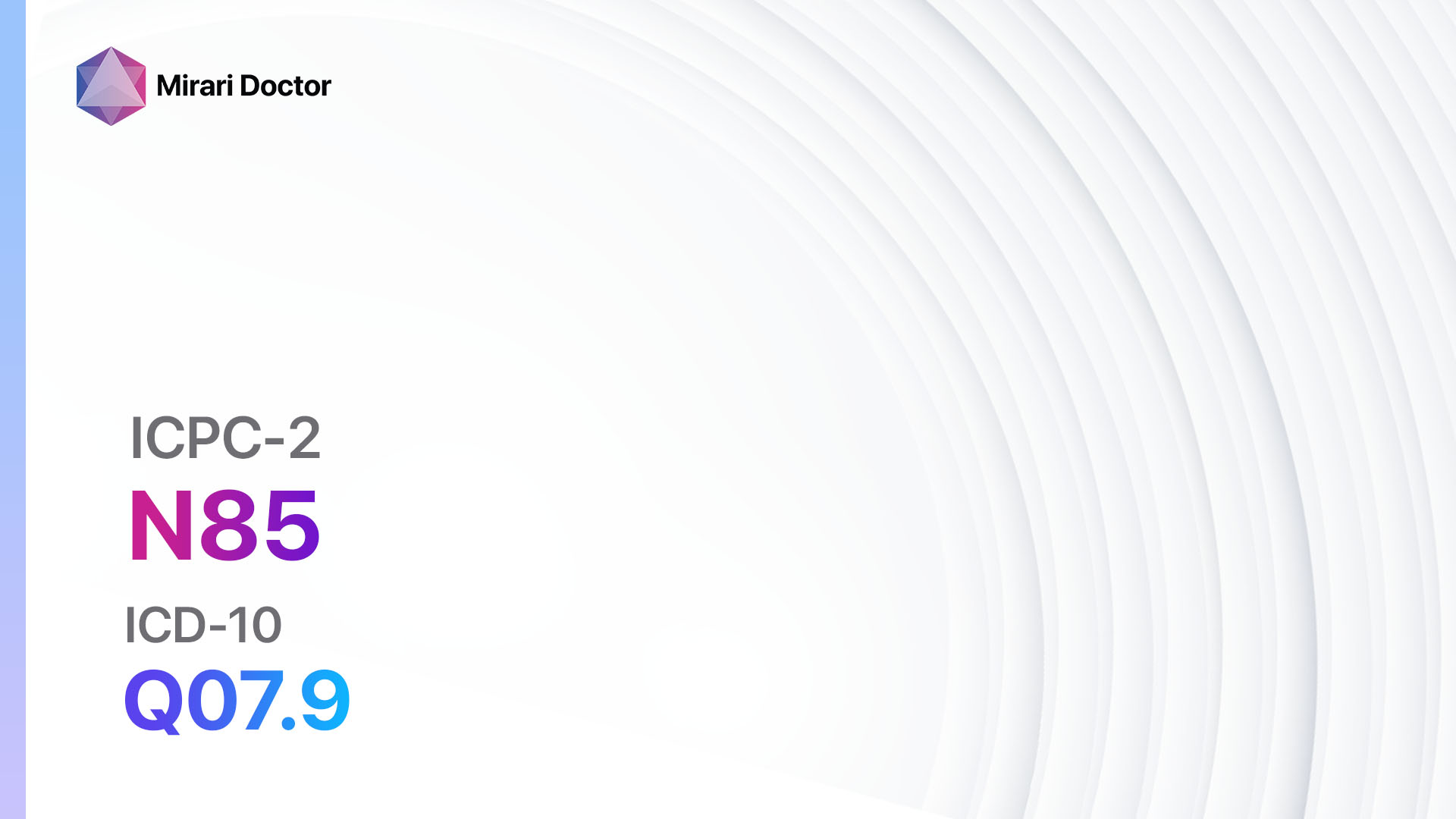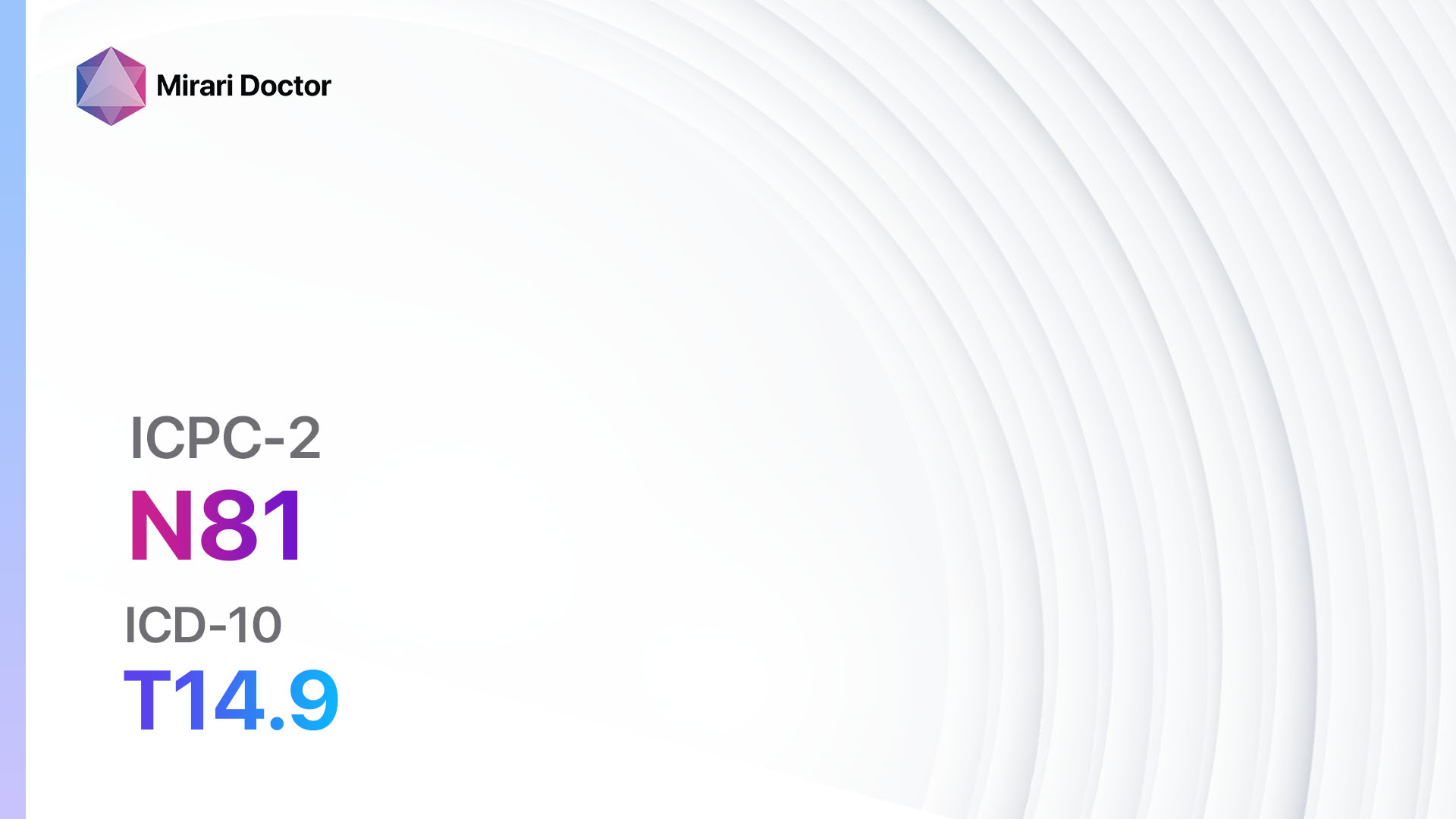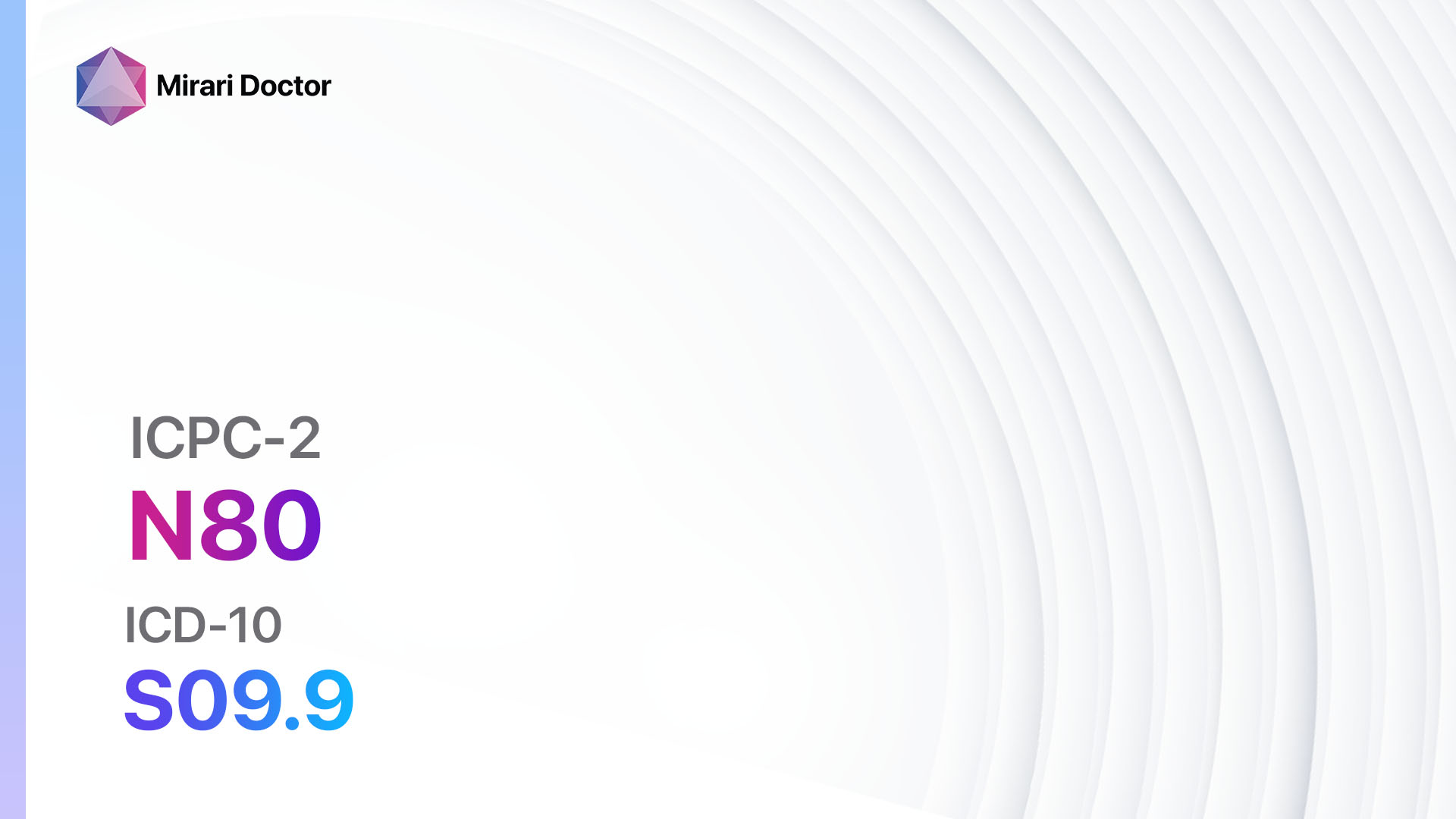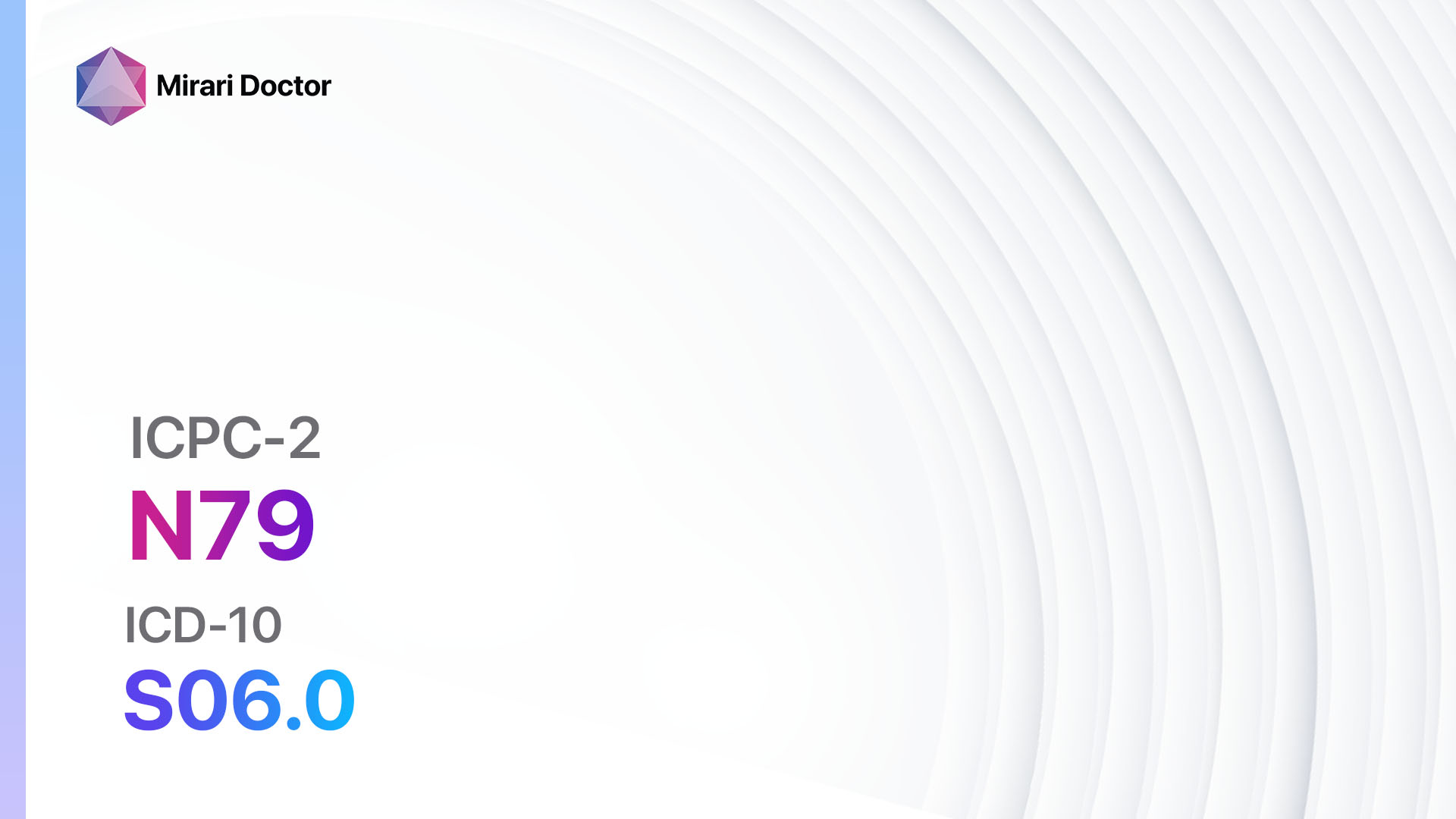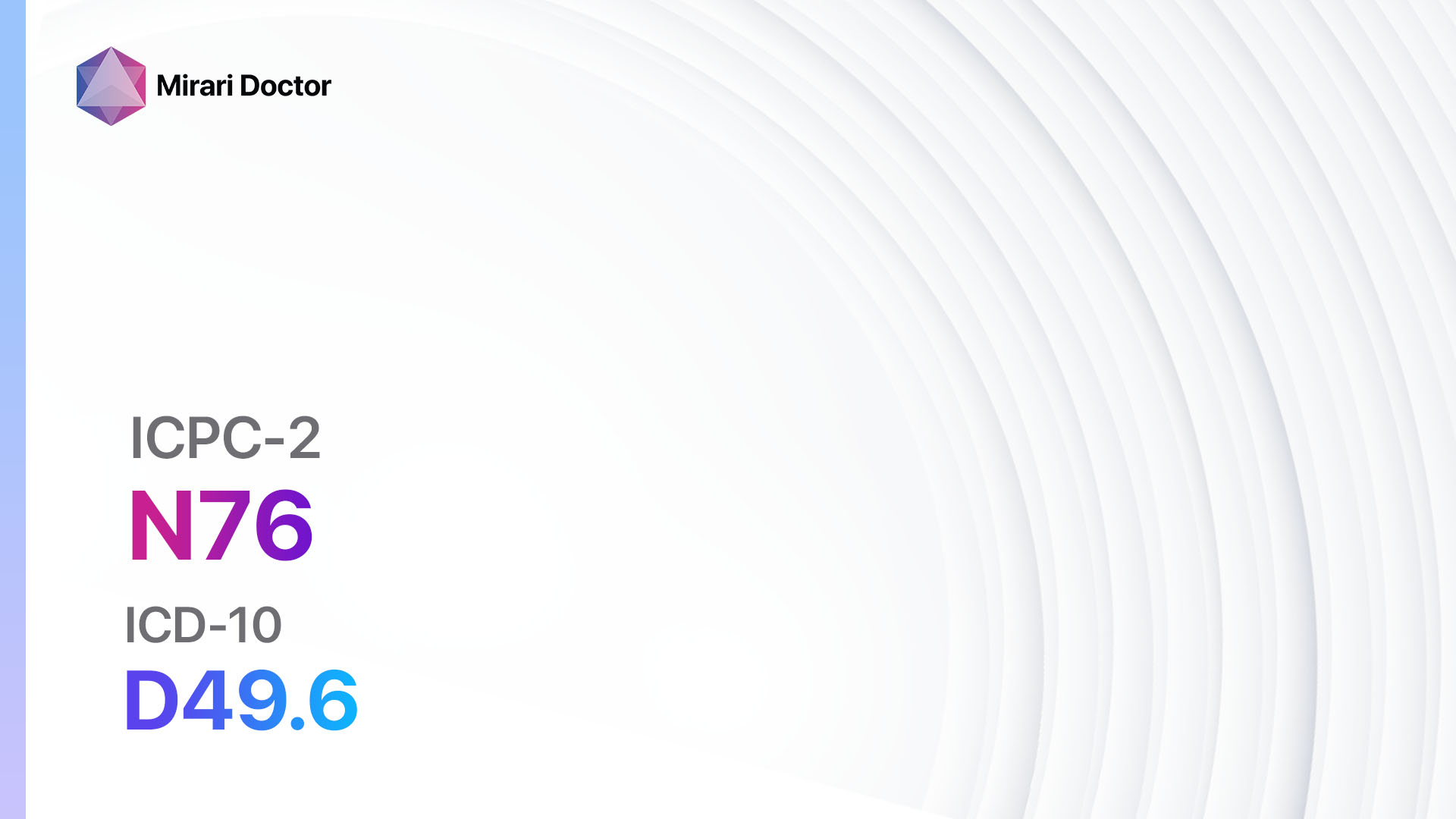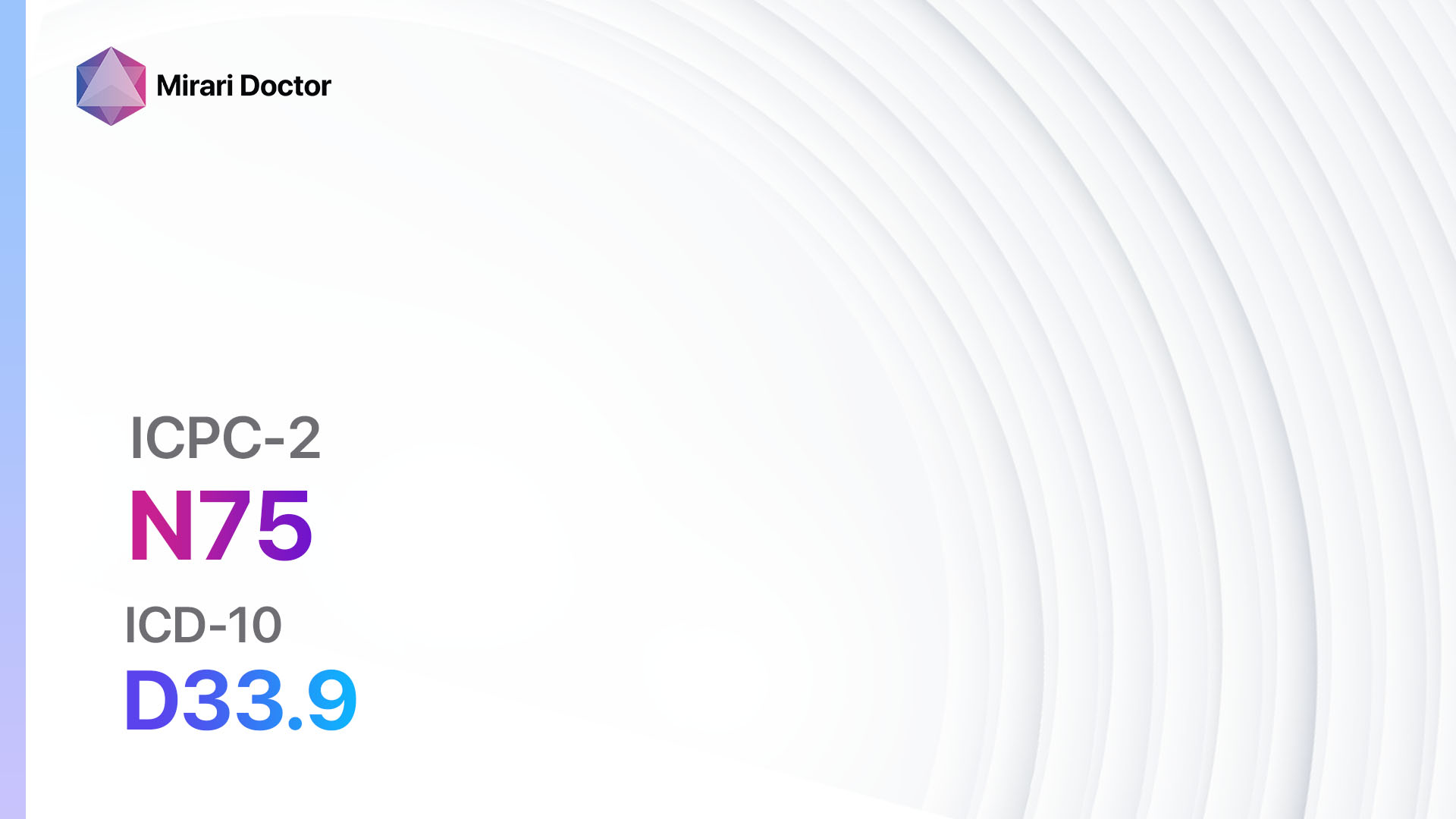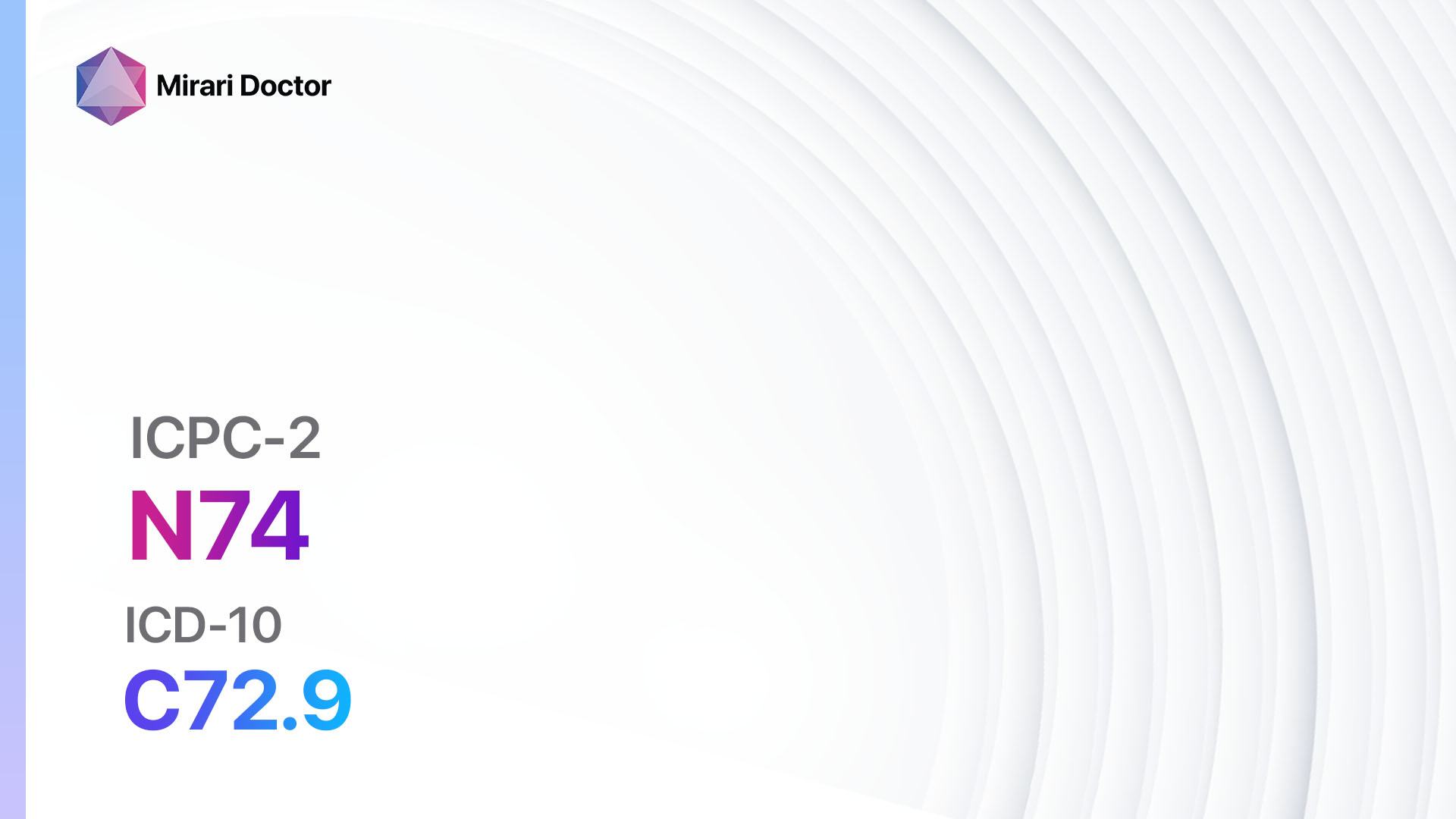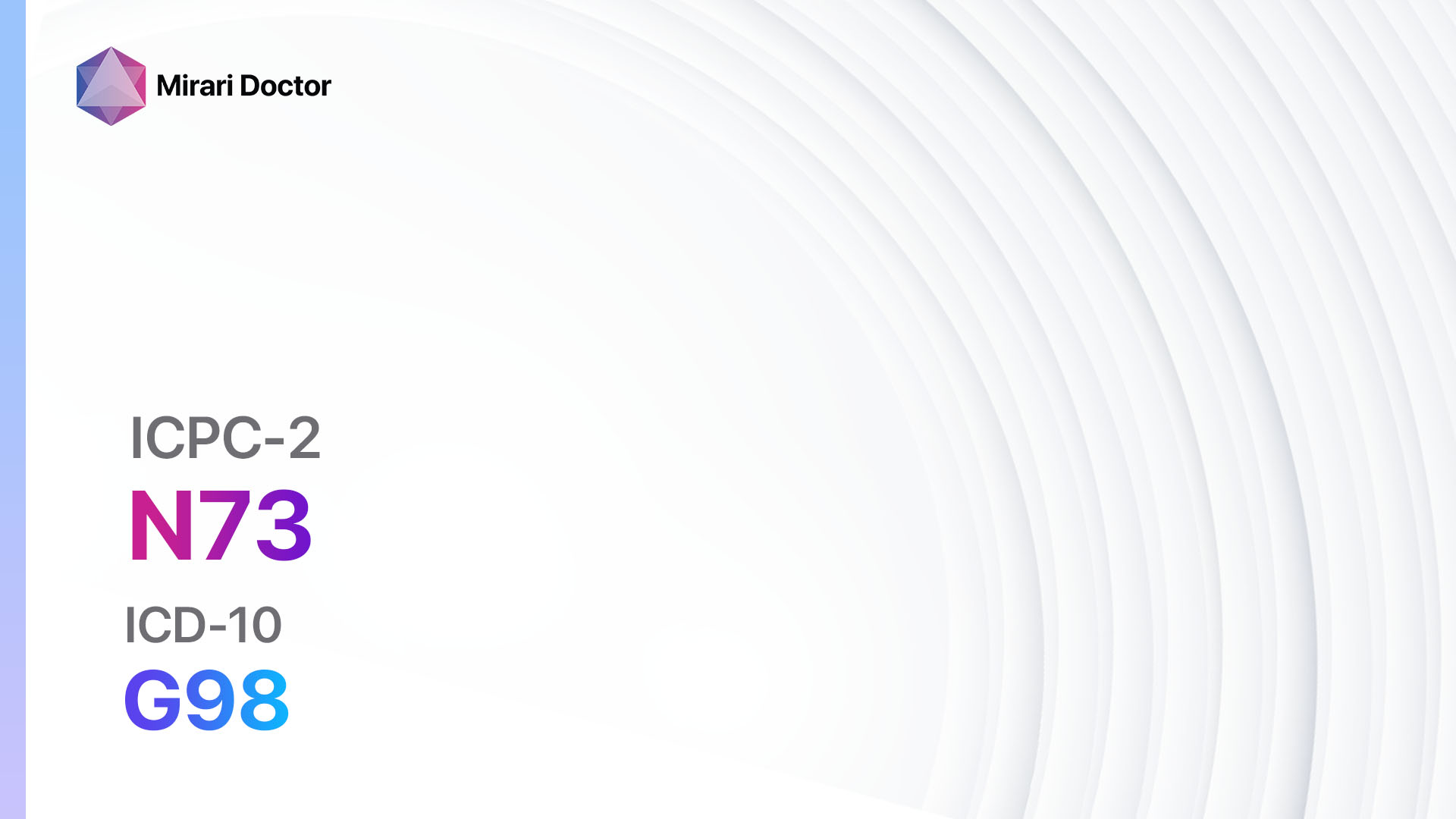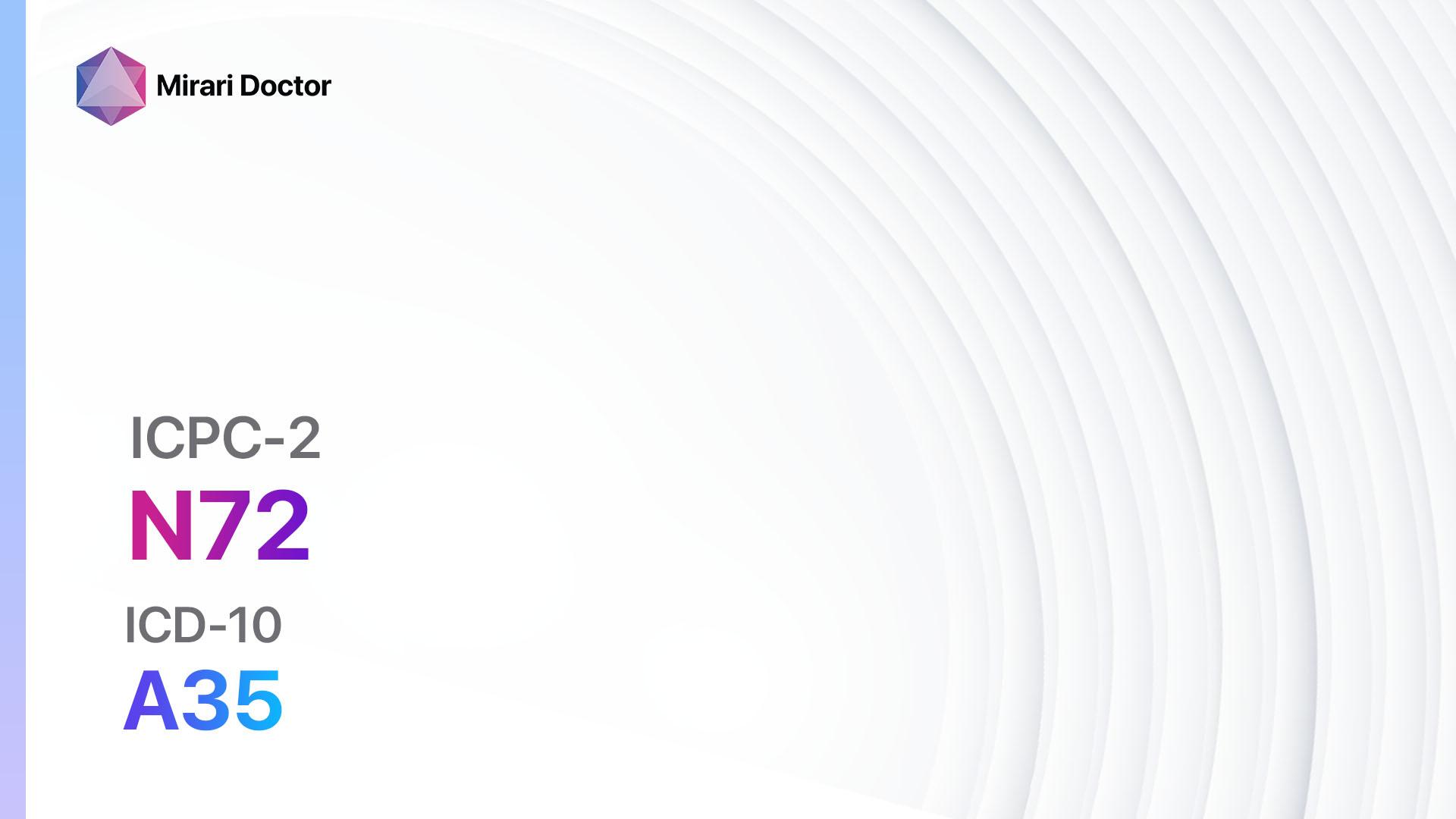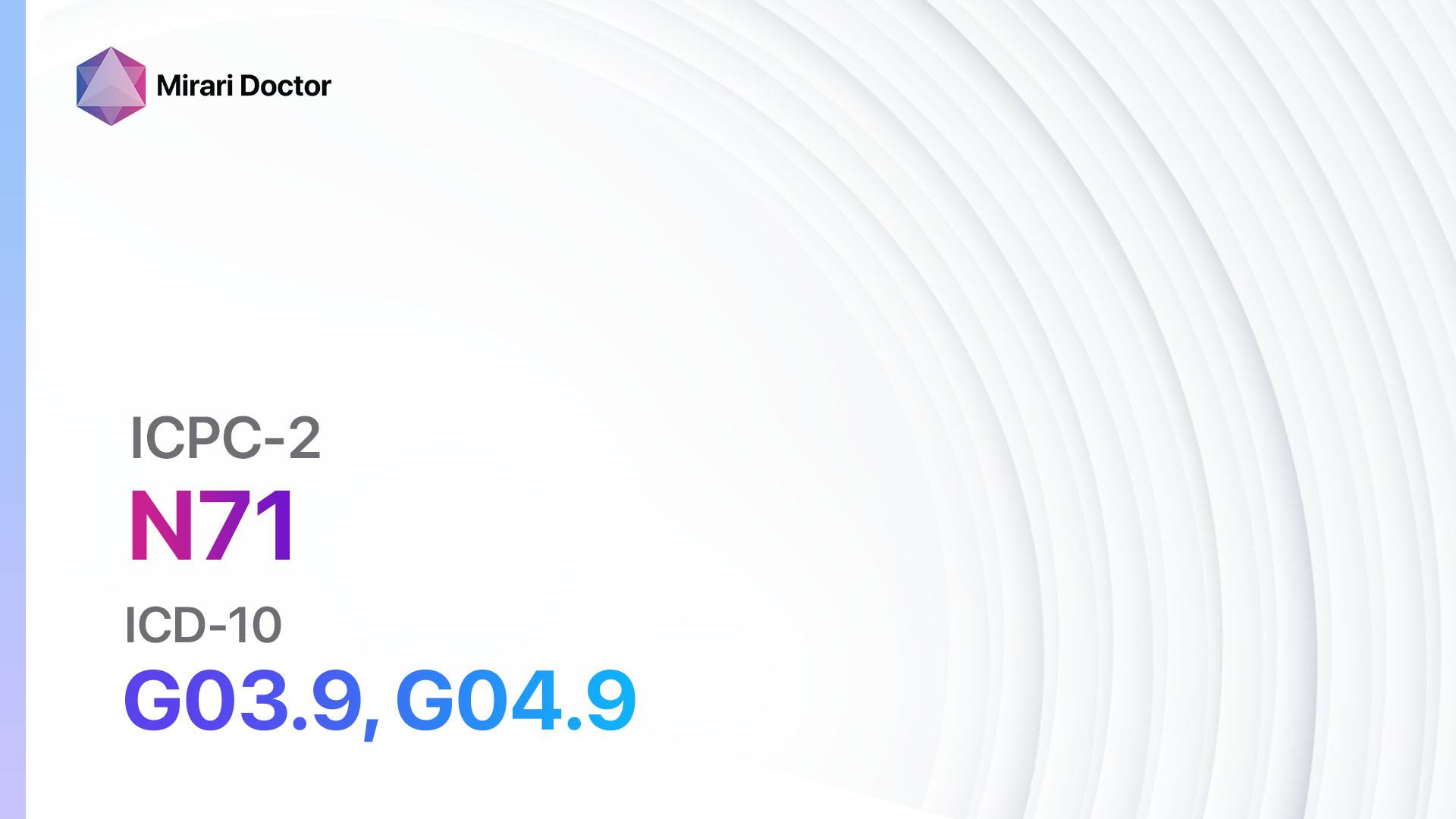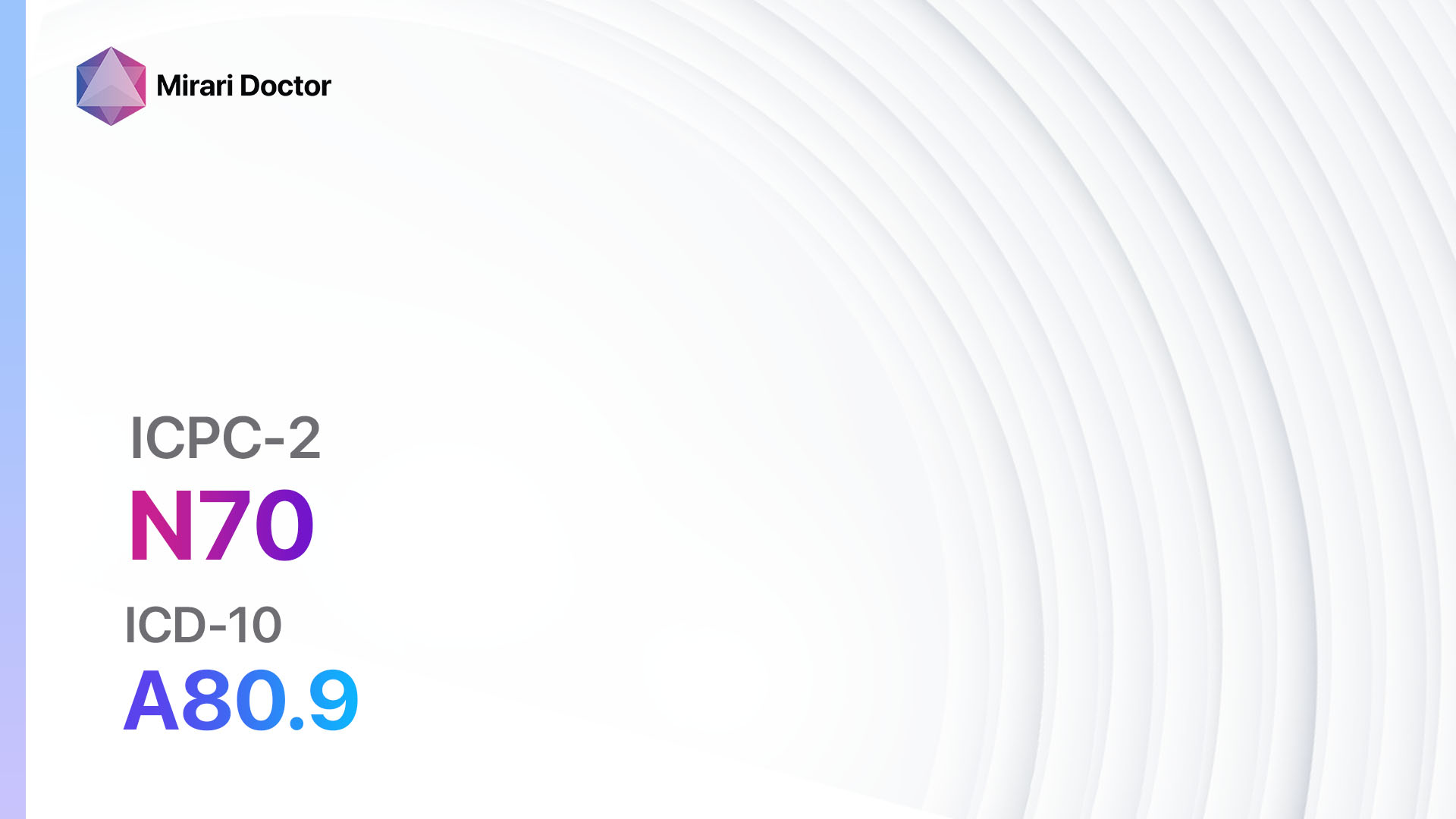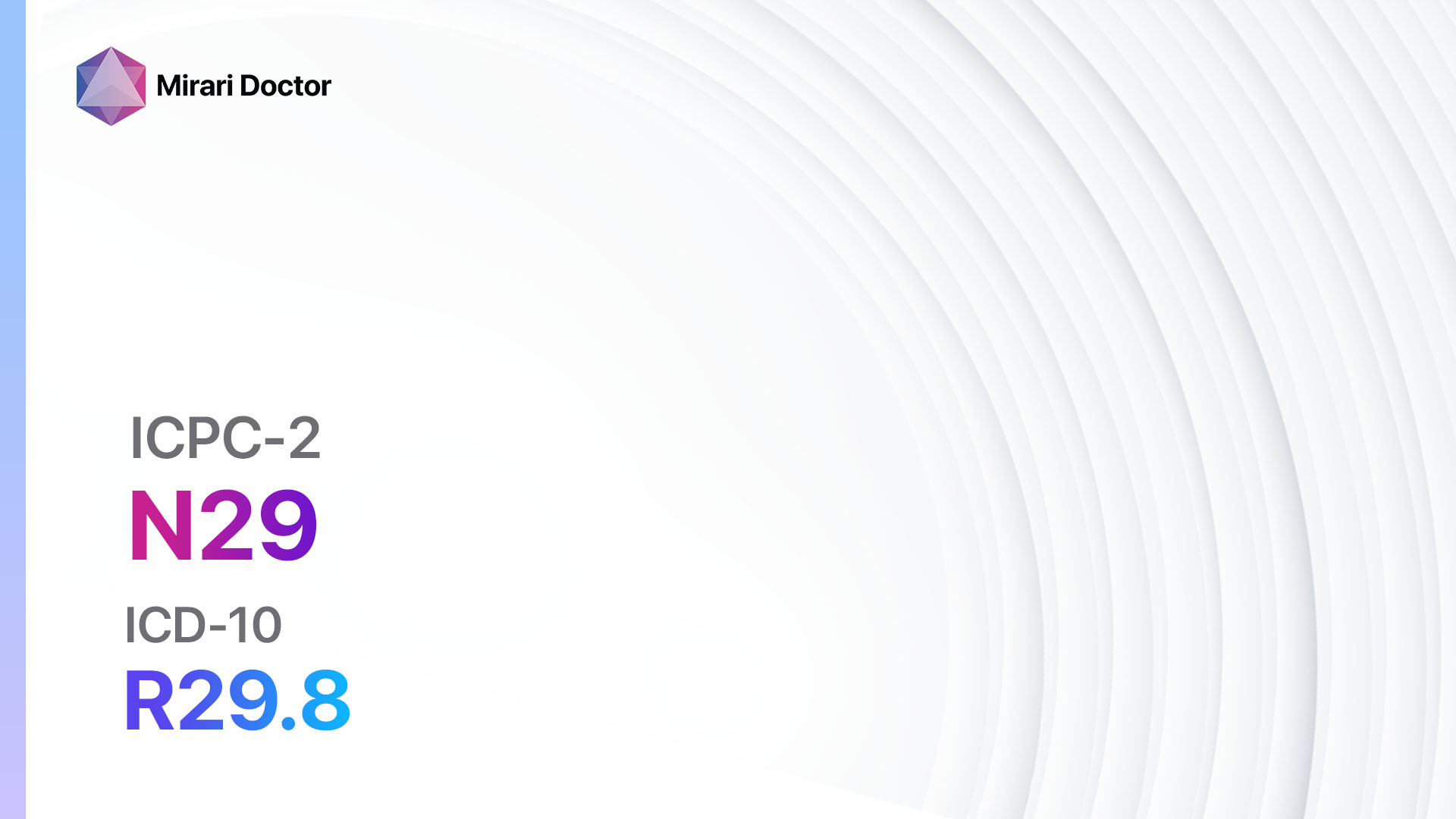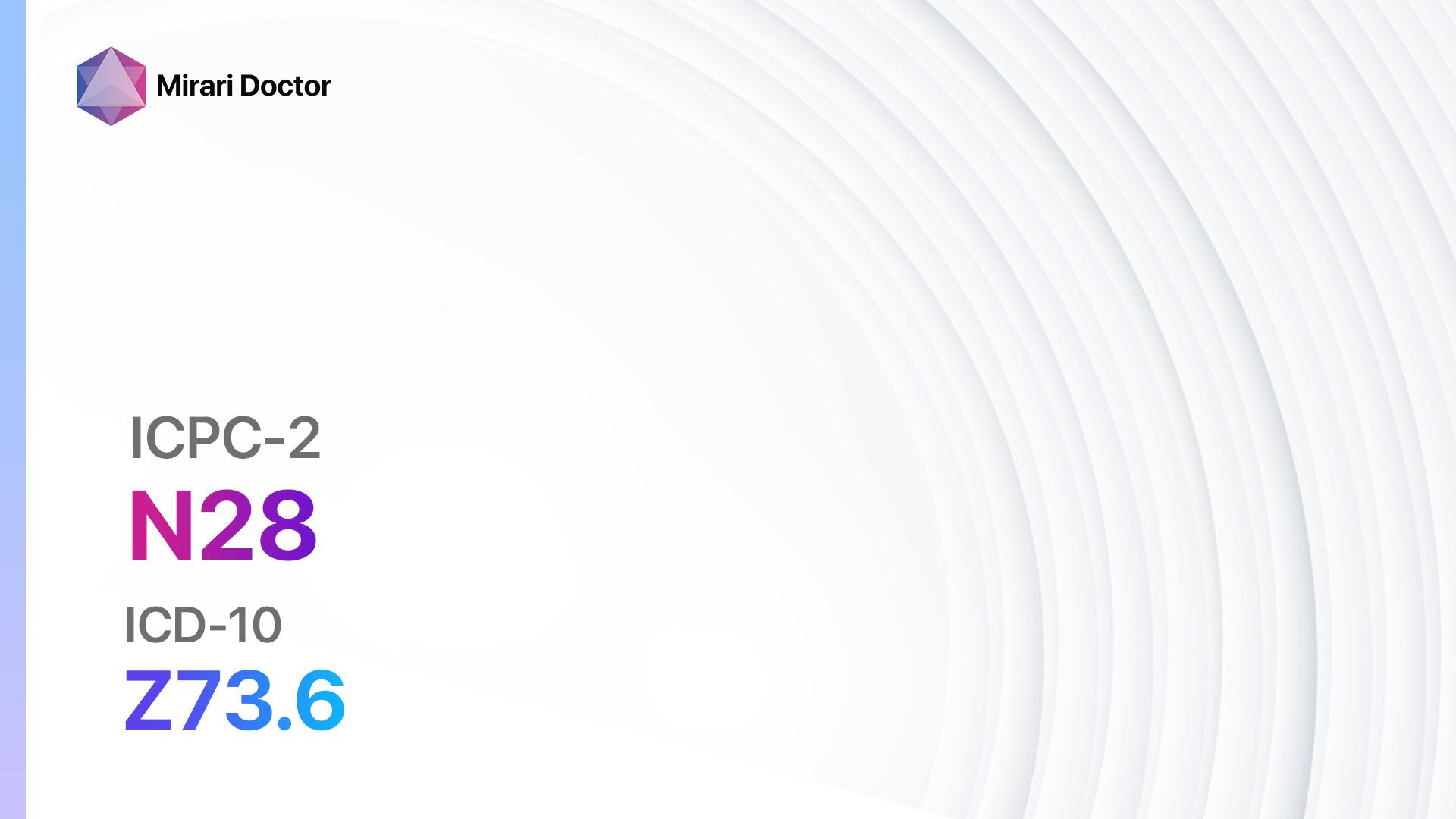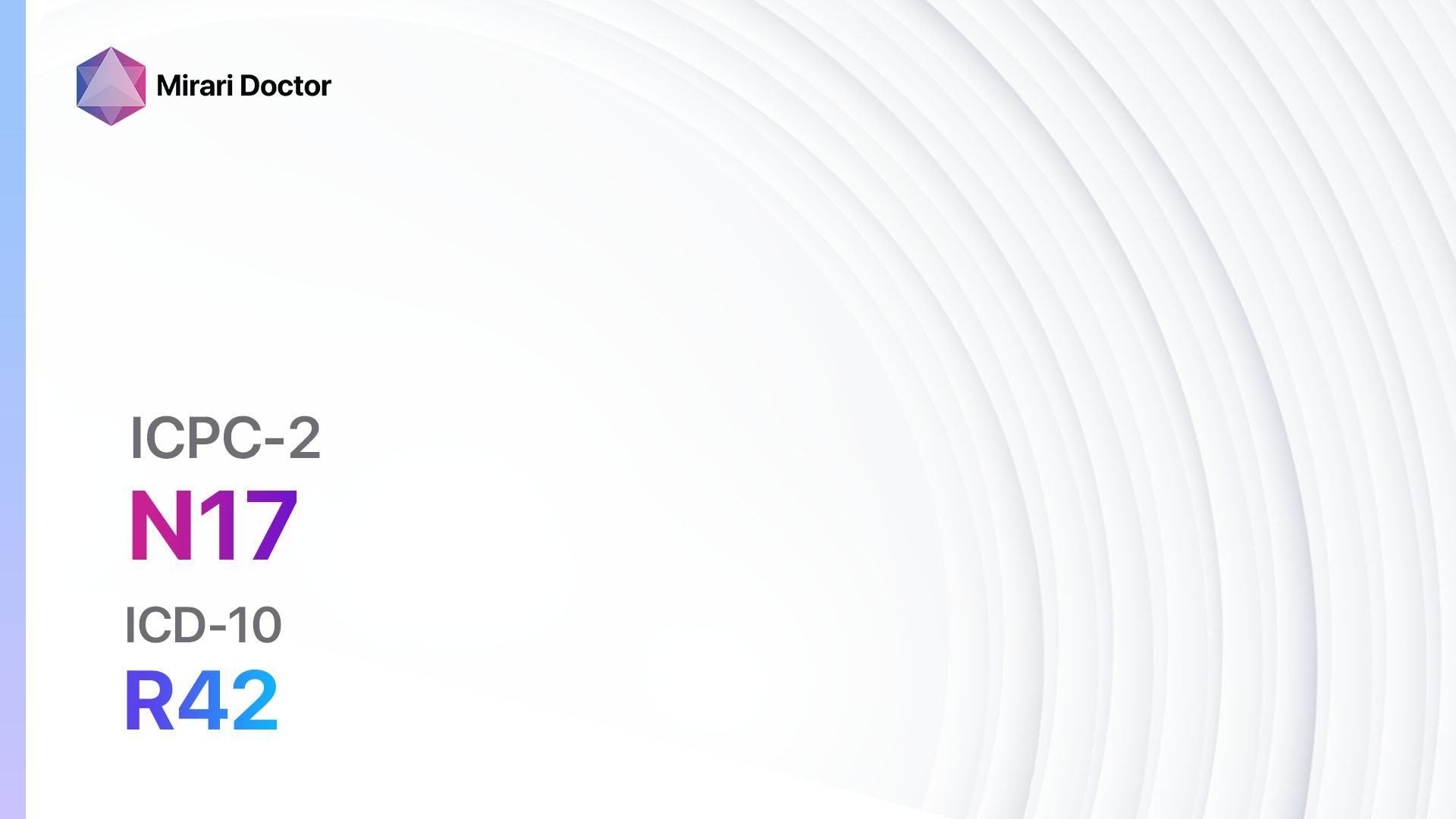
Introduction
Vertigo and dizziness are common symptoms that can significantly impact a person’s quality of life. This guide aims to provide healthcare professionals with a comprehensive approach to diagnosing and managing vertigo/dizziness. By understanding the symptoms, causes, and appropriate diagnostic steps, healthcare professionals can effectively treat and educate patients about their condition.
Codes
Symptoms
- Vertigo: A spinning sensation that can be described as feeling like the room is spinning or moving.[3]
- Dizziness: A feeling of lightheadedness, unsteadiness, or a sensation of being off-balance.[3]
Causes
- Benign paroxysmal positional vertigo (BPPV): Caused by small calcium crystals in the inner ear that become dislodged and affect balance.[4]
- Meniere’s disease: A disorder of the inner ear that causes episodes of vertigo, hearing loss, tinnitus (ringing in the ears), and a feeling of fullness in the affected ear.[4]
- Vestibular neuritis: Inflammation of the vestibular nerve, usually caused by a viral infection.[5]
- Labyrinthitis: Inflammation of the inner ear, often caused by a viral infection.[5]
- Migraine-associated vertigo: Vertigo that occurs as a symptom of migraines.[6]
Diagnostic Steps
Medical History
- Gather information about the patient’s symptoms, including the frequency, duration, and triggers.
- Ask about any associated symptoms, such as hearing loss, tinnitus, or headache.
- Inquire about any recent illnesses or infections.
- Assess the patient’s medical history, including any previous episodes of vertigo or dizziness, and any underlying medical conditions.[7]
Physical Examination
- Perform a comprehensive physical examination, including a neurological examination, to assess balance, coordination, and any abnormalities.
- Evaluate the patient’s eye movements, as abnormalities can indicate a vestibular disorder.
- Assess blood pressure and heart rate to rule out any cardiovascular causes of dizziness.[7]
Laboratory Tests
- Complete blood count (CBC): To rule out anemia or infections.
- Electrolyte levels: To assess for any imbalances that may contribute to dizziness.
- Thyroid function tests: To evaluate thyroid function, as an underactive or overactive thyroid can cause dizziness.
- Blood glucose levels: To rule out hypoglycemia as a cause of dizziness.[8]
Diagnostic Imaging
- Magnetic resonance imaging (MRI): To evaluate the brain and inner ear structures for any abnormalities.
- Computed tomography (CT) scan: To assess for any structural abnormalities in the brain or inner ear.
- Electronystagmography (ENG): A test that measures eye movements to assess the function of the vestibular system.[9]
Other Tests
- Audiometry: To assess hearing function and rule out any hearing loss.
- Dix-Hallpike maneuver: A test used to diagnose BPPV by inducing vertigo and observing eye movements.
- Videonystagmography (VNG): A test that uses video goggles to assess eye movements and evaluate the function of the vestibular system.[10]
Follow-up and Patient Education
- Schedule follow-up appointments to monitor the patient’s progress and adjust treatment as necessary.
- Provide education on lifestyle modifications, such as avoiding triggers, managing stress, and maintaining a healthy diet and exercise routine.
- Discuss the importance of adherence to medication and treatment plans.
- Encourage patients to seek medical attention if symptoms worsen or new symptoms develop.
Possible Interventions
Traditional Interventions
Medications:
Top 5 drugs for Vertigo/dizziness:
- Meclizine:
- Cost: $10-$30 for a month’s supply.
- Contraindications: Hypersensitivity to meclizine or related medications.
- Side effects: Drowsiness, dry mouth, blurred vision.
- Severe side effects: Irregular heartbeat, difficulty urinating.
- Drug interactions: Central nervous system depressants, anticholinergic drugs.
- Warning: May cause drowsiness, avoid driving or operating machinery.
- Betahistine:
- Cost: $20-$50 for a month’s supply.
- Contraindications: Pheochromocytoma, bronchial asthma, peptic ulcer.
- Side effects: Upset stomach, headache, dizziness.
- Severe side effects: Allergic reactions, low blood pressure.
- Drug interactions: None reported.
- Warning: Use caution in patients with asthma or peptic ulcer.
- Dimenhydrinate:
- Cost: $5-$15 for a month’s supply.
- Contraindications: Hypersensitivity to dimenhydrinate or related medications.
- Side effects: Drowsiness, dry mouth, blurred vision.
- Severe side effects: Irregular heartbeat, difficulty urinating.
- Drug interactions: Central nervous system depressants, anticholinergic drugs.
- Warning: May cause drowsiness, avoid driving or operating machinery.
- Scopolamine:
- Cost: $10-$30 for a month’s supply.
- Contraindications: Hypersensitivity to scopolamine or related medications.
- Side effects: Dry mouth, blurred vision, drowsiness.
- Severe side effects: Rapid heartbeat, confusion, hallucinations.
- Drug interactions: Central nervous system depressants, anticholinergic drugs.
- Warning: May cause drowsiness, avoid driving or operating machinery.
- Prochlorperazine:
- Cost: $10-$30 for a month’s supply.
- Contraindications: Hypersensitivity to prochlorperazine or related medications, liver disease.
- Side effects: Drowsiness, dry mouth, constipation.
- Severe side effects: Neuroleptic malignant syndrome, tardive dyskinesia.
- Drug interactions: Central nervous system depressants, anticholinergic drugs.
- Warning: May cause drowsiness, avoid driving or operating machinery.
Alternative Drugs:
- Ginger (supplement or tea): May help alleviate symptoms of dizziness and nausea. Cost: $5-$15 for a month’s supply.
- Ginkgo biloba (supplement): Believed to improve blood flow and reduce dizziness. Cost: $10-$30 for a month’s supply.
- Vitamin D (supplement): Deficiency in vitamin D has been associated with dizziness. Cost: $5-$15 for a month’s supply.
- Valerian root (supplement): May help reduce anxiety and improve sleep quality, potentially alleviating dizziness. Cost: $10-$30 for a month’s supply.
- Magnesium (supplement): Some evidence suggests that magnesium deficiency may contribute to dizziness. Cost: $5-$15 for a month’s supply.
Surgical Procedures:
- Surgical intervention is typically not necessary for the treatment of vertigo/dizziness. However, in rare cases where the underlying cause is a structural abnormality, such as a tumor or malformation, surgical intervention may be considered. The cost of surgical procedures can vary significantly depending on the specific procedure and location.
Alternative Interventions
- Acupuncture: May help improve blood flow and reduce dizziness. Cost: $60-$120 per session.
- Chiropractic manipulation: Some evidence suggests that chiropractic adjustments may help alleviate vertigo symptoms. Cost: $50-$100 per session.
- Vestibular rehabilitation therapy: A specialized form of physical therapy that focuses on improving balance and reducing dizziness. Cost: $100-$200 per session.
- Yoga and meditation: These practices may help reduce stress and improve overall well-being, potentially alleviating dizziness. Cost: Varies depending on the location and type of class.
Lifestyle Interventions
- Avoid triggers: Identify and avoid any triggers that may worsen symptoms, such as certain foods, alcohol, or stress.
- Stay hydrated: Dehydration can contribute to dizziness, so it is important to drink an adequate amount of water throughout the day.
- Get enough sleep: Lack of sleep can exacerbate symptoms of dizziness, so aim for 7-9 hours of quality sleep each night.
- Manage stress: Stress can contribute to dizziness, so finding healthy ways to manage stress, such as through exercise, meditation, or relaxation techniques, may be beneficial.
- Maintain a healthy diet: Eating a balanced diet that includes fruits, vegetables, whole grains, and lean proteins can support overall health and reduce the risk of dizziness.
It is important to note that the cost ranges provided are approximate and may vary depending on the location and availability of the interventions.
Mirari Cold Plasma Alternative Intervention
Understanding Mirari Cold Plasma
- Safe and Non-Invasive Treatment:Mirari Cold Plasma is a safe and non-invasive treatment option for various skin conditions. It does not require incisions, minimizing the risk of scarring, bleeding, or tissue damage.
- Efficient Extraction of Foreign Bodies:Mirari Cold Plasma facilitates the removal of foreign bodies from the skin by degrading and dissociating organic matter, allowing easier access and extraction.
- Pain Reduction and Comfort:Mirari Cold Plasma has a local analgesic effect, providing pain relief during the treatment, making it more comfortable for the patient.
- Reduced Risk of Infection:Mirari Cold Plasma has antimicrobial properties, effectively killing bacteria and reducing the risk of infection.
- Accelerated Healing and Minimal Scarring: Mirari Cold Plasma stimulates wound healing and tissue regeneration, reducing healing time and minimizing the formation of scars.
Mirari Cold Plasma Prescription
Video instructions for using Mirari Cold Plasma Device – N17 Vertigo/dizziness (ICD-10:R42)
| Mild | Moderate | Severe |
| Mode setting: 7 (Immunotherapy) Location: 1 (Sacrum) Morning: 15 minutes, Evening: 15 minutes | Mode setting: 7 (Immunotherapy) Location: 1 (Sacrum) Morning: 30 minutes, Lunch: 30 minutes, Evening: 30 minutes | Mode setting: 7 (Immunotherapy) Location: 1 (Sacrum) Morning: 30 minutes, Lunch: 30 minutes, Evening: 30 minutes |
| Mode setting: 7 (Immunotherapy) Location: 4 (Heart, Bile & Pancreas) Morning: 15 minutes, Evening: 15 minutes | Mode setting: 7 (Immunotherapy) Location: 4 (Heart, Bile & Pancreas) Morning: 30 minutes, Lunch: 30 minutes, Evening: 30 minutes | Mode setting: 7 (Immunotherapy) Location: 4 (Heart, Bile & Pancreas) Morning: 30 minutes, Lunch: 30 minutes, Evening: 30 minutes |
| Mode setting: 7 (Immunotherapy) Location: 4 (Heart, Bile & Pancreas) Morning: 15 minutes, Evening: 15 minutes | Mode setting: 7 (Immunotherapy) Location: 4 (Heart, Bile & Pancreas) Morning: 30 minutes, Lunch: 30 minutes, Evening: 30 minutes | Mode setting: 7 (Immunotherapy) Location: 4 (Heart, Bile & Pancreas) Morning: 30 minutes, Lunch: 30 minutes, Evening: 30 minutes |
| Total Morning: 45 minutes approx. $7.50 USD, Evening: 45 minutes approx. $7.50 USD | Total Morning: 90 minutes approx. $15 USD, Lunch: 90 minutes approx. $15 USD, Evening: 90 minutes approx. $15 USD | Total Morning: 90 minutes approx. $15 USD, Lunch: 90 minutes approx. $15 USD, Evening: 90 minutes approx. $15 USD |
| Usual treatment for 7-60 days approx. $105 USD – $900 USD | Usual treatment for 6-8 weeks approx. $1,890 USD – $2,520 USD | Usual treatment for 3-6 months approx. $4,050 USD – $8,100 USD |
 |
|
Use the Mirari Cold Plasma device to treat Vertigo/dizziness effectively.
WARNING: MIRARI COLD PLASMA IS DESIGNED FOR THE HUMAN BODY WITHOUT ANY ARTIFICIAL OR THIRD PARTY PRODUCTS. USE OF OTHER PRODUCTS IN COMBINATION WITH MIRARI COLD PLASMA MAY CAUSE UNPREDICTABLE EFFECTS, HARM OR INJURY. PLEASE CONSULT A MEDICAL PROFESSIONAL BEFORE COMBINING ANY OTHER PRODUCTS WITH USE OF MIRARI.
Step 1: Cleanse the Skin
- Start by cleaning the affected area of the skin with a gentle cleanser or mild soap and water. Gently pat the area dry with a clean towel.
Step 2: Prepare the Mirari Cold Plasma device
- Ensure that the Mirari Cold Plasma device is fully charged or has fresh batteries as per the manufacturer’s instructions. Make sure the device is clean and in good working condition.
- Switch on the Mirari device using the power button or by following the specific instructions provided with the device.
- Some Mirari devices may have adjustable settings for intensity or treatment duration. Follow the manufacturer’s instructions to select the appropriate settings based on your needs and the recommended guidelines.
Step 3: Apply the Device
- Place the Mirari device in direct contact with the affected area of the skin. Gently glide or hold the device over the skin surface, ensuring even coverage of the area experiencing.
- Slowly move the Mirari device in a circular motion or follow a specific pattern as indicated in the user manual. This helps ensure thorough treatment coverage.
Step 4: Monitor and Assess:
- Keep track of your progress and evaluate the effectiveness of the Mirari device in managing your Vertigo/dizziness. If you have any concerns or notice any adverse reactions, consult with your health care professional.
Note
This guide is for informational purposes only and should not replace the advice of a medical professional. Always consult with your healthcare provider or a qualified medical professional for personal advice, diagnosis, or treatment. Do not solely rely on the information presented here for decisions about your health. Use of this information is at your own risk. The authors of this guide, nor any associated entities or platforms, are not responsible for any potential adverse effects or outcomes based on the content.
Mirari Cold Plasma System Disclaimer
- Purpose: The Mirari Cold Plasma System is a Class 2 medical device designed for use by trained healthcare professionals. It is registered for use in Thailand and Vietnam. It is not intended for use outside of these locations.
- Informational Use: The content and information provided with the device are for educational and informational purposes only. They are not a substitute for professional medical advice or care.
- Variable Outcomes: While the device is approved for specific uses, individual outcomes can differ. We do not assert or guarantee specific medical outcomes.
- Consultation: Prior to utilizing the device or making decisions based on its content, it is essential to consult with a Certified Mirari Tele-Therapist and your medical healthcare provider regarding specific protocols.
- Liability: By using this device, users are acknowledging and accepting all potential risks. Neither the manufacturer nor the distributor will be held accountable for any adverse reactions, injuries, or damages stemming from its use.
- Geographical Availability: This device has received approval for designated purposes by the Thai and Vietnam FDA. As of now, outside of Thailand and Vietnam, the Mirari Cold Plasma System is not available for purchase or use.
References
- ICPC-2 – English. (n.d.). Retrieved from//www.gesy.org.cy/el-gr/annualreport/icpc-2-english1-10.pdf
- 2024 ICD-10-CM Diagnosis Code R42: Dizziness and giddiness. (n.d.). Retrieved from//www.icd10data.com/ICD10CM/Codes/R00-R99/R40-R46/R42-/R42
- Mayo Clinic. (n.d.). Dizziness – Symptoms and causes. Retrieved from//www.mayoclinic.org/diseases-conditions/dizziness/symptoms-causes/syc-20371787
- Cleveland Clinic. (n.d.). Vertigo: Symptoms, Causes & Treatment. Retrieved from//my.clevelandclinic.org/health/symptoms/21769-vertigo
- WebMD. (n.d.). Vertigo: Causes, Symptoms, and Treatment. Retrieved from//www.webmd.com/brain/vertigo-symptoms-causes-treatment
- Healthline. (n.d.). Dizziness: Causes, Related Symptoms, Treatment, Diagnosis. Retrieved from//www.healthline.com/health/dizziness
- DocDoc. (n.d.). What is Dizziness/Vertigo: Symptoms, Causes, Diagnosis. Retrieved from//www.docdoc.com/medical-information/conditions/dizziness-vertigo
- BMJ Publishing Group Limited. (n.d.). Appendix 1. ICPC-2 Codes used in analysis classified by specific. Retrieved from//fmch.bmj.com/content/fmch/9/4/e001087/DC1/embed/inline-supplementary-material-1.pdf?download=true
- ICD-10data.com. (n.d.). Dizziness and giddiness R42 – ICD-10-CM Codes. Retrieved from//www.icd10data.com/ICD10CM/Codes/R00-R99/R40-R46/R42-
- gesund.bund.de. (n.d.). ICD-10 code: R42 Dizziness and giddiness. Retrieved from//gesund.bund.de/en/icd-code-search/r42
Related articles
Made in USA


